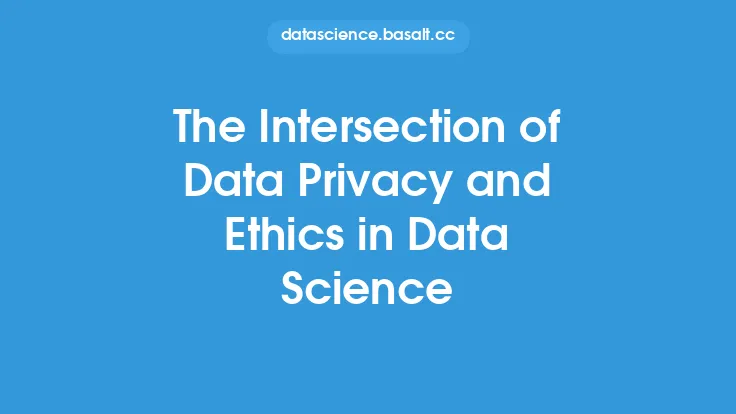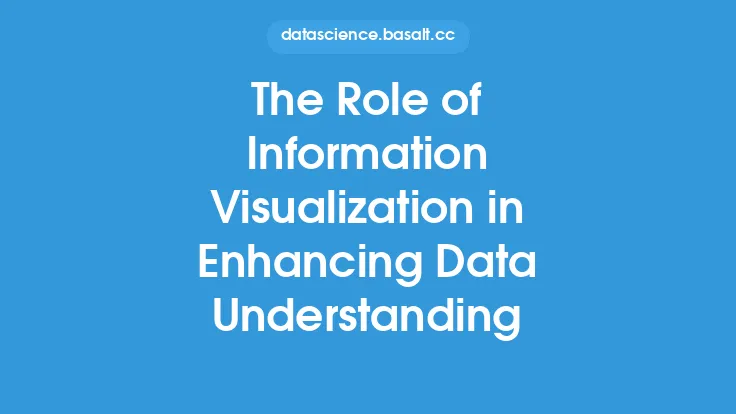The realm of data storytelling is becoming increasingly important in today's data-driven world, and at the heart of this field lies the intersection of information design and data analysis. This intersection is where the art of presenting complex data in a clear and concise manner meets the science of extracting insights from that data. It is a critical juncture that requires a deep understanding of both the design principles that guide the visualization of data and the analytical techniques used to uncover the stories hidden within it.
Introduction to Information Design
Information design is a field of study that focuses on the presentation of information in a way that is easy to understand and navigate. It involves the use of various design elements, such as typography, color, and imagery, to communicate complex information in a clear and concise manner. In the context of data analysis, information design plays a crucial role in helping to identify trends, patterns, and correlations within the data. By presenting data in a visually appealing and intuitive way, information designers can help to facilitate a deeper understanding of the insights and findings that emerge from the analysis.
The Role of Data Analysis
Data analysis is the process of evaluating data with statistical and analytical techniques to extract meaningful insights and patterns. It involves the use of various tools and methodologies, such as data mining, machine learning, and statistical modeling, to uncover the stories hidden within the data. In the context of information design, data analysis provides the foundation upon which the visualizations and presentations are built. By applying analytical techniques to the data, analysts can identify the key findings and insights that need to be communicated, and then work with designers to present those findings in a clear and compelling way.
The Intersection of Information Design and Data Analysis
The intersection of information design and data analysis is where the two fields come together to create a powerful and effective way of communicating complex data insights. This intersection is characterized by a deep understanding of both the design principles that guide the visualization of data and the analytical techniques used to uncover the stories hidden within it. By combining these two fields, practitioners can create interactive and dynamic visualizations that allow users to explore the data in a more immersive and engaging way. This can include the use of dashboards, reports, and other types of data visualizations that provide a comprehensive overview of the insights and findings.
Technical Considerations
From a technical perspective, the intersection of information design and data analysis requires a range of skills and tools. On the design side, practitioners need to have a strong understanding of design principles, including typography, color theory, and composition. They also need to be proficient in design tools such as Adobe Creative Suite, Sketch, and Figma. On the analysis side, practitioners need to have a strong understanding of statistical and analytical techniques, including data mining, machine learning, and statistical modeling. They also need to be proficient in tools such as Excel, SQL, and programming languages like Python and R.
Best Practices for Effective Collaboration
To ensure effective collaboration between information designers and data analysts, there are several best practices that can be followed. First, it is essential to establish clear communication channels and ensure that all stakeholders are aligned on the project goals and objectives. Second, designers and analysts should work together to develop a deep understanding of the data and the insights that need to be communicated. Third, designers should be involved in the analysis process from the outset, to ensure that the visualizations and presentations are tailored to the specific needs of the project. Finally, analysts should be open to feedback and iteration, and willing to refine their findings and insights based on the design requirements.
Real-World Applications
The intersection of information design and data analysis has a wide range of real-world applications, from business and finance to healthcare and education. In business, for example, data visualizations can be used to communicate key performance indicators (KPIs) and other metrics to stakeholders. In healthcare, data visualizations can be used to track patient outcomes and identify trends and patterns in disease diagnosis and treatment. In education, data visualizations can be used to track student performance and identify areas where additional support is needed.
Future Directions
As the field of data storytelling continues to evolve, the intersection of information design and data analysis is likely to play an increasingly important role. With the rise of big data and the Internet of Things (IoT), there will be an ever-growing need for effective and efficient ways of communicating complex data insights. To meet this need, practitioners will need to stay up-to-date with the latest design tools and analytical techniques, and be willing to experiment with new and innovative approaches to data visualization and presentation. Additionally, there will be a growing need for collaboration and communication between designers and analysts, to ensure that the insights and findings are presented in a clear and compelling way.
Conclusion
In conclusion, the intersection of information design and data analysis is a critical juncture that requires a deep understanding of both the design principles that guide the visualization of data and the analytical techniques used to uncover the stories hidden within it. By combining these two fields, practitioners can create interactive and dynamic visualizations that allow users to explore the data in a more immersive and engaging way. As the field of data storytelling continues to evolve, the intersection of information design and data analysis is likely to play an increasingly important role, and practitioners will need to stay up-to-date with the latest design tools and analytical techniques to meet the growing demand for effective and efficient communication of complex data insights.





